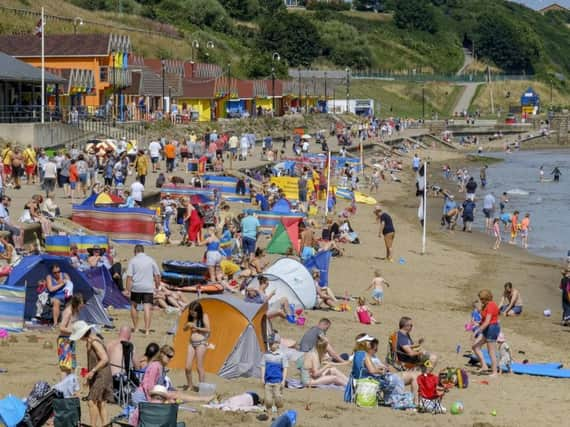Coastal towns must reinvent themselves to attract new visitors, say Arts Council and Heritage Lottery Fund


The Heritage Lottery Fund and the Arts Council stressed that seaside communities must have something new to offer both existing residents and visitors in order to survive and thrive.
Last year, analysis of economic and social data by the Social Market Foundation think-tank found coastal areas including the likes of Scarborough are falling behind the rest of the country when it comes to employment, wages, health and education.
Advertisement
Hide AdAdvertisement
Hide AdBut these areas, which have suffered as British tourists have favoured foreign destinations, can bring in new and different types of visitors by innovating, the Lords Seaside Communities Committee heard.
Committee member Liberal Democrat peer Lord Shutt of Greetland asked both organisations what the organisations were doing to help coastal areas maintain traditional attractions.
He said: “Many people go to the seaside and find that it’s the cuddly place that they have been to on a regular basis and they want the same menu.
Advertisement
Hide AdAdvertisement
Hide Ad“And yet I know that arts people particularly innovation is thought to be a wonderful thing, but where do you stand on supporting the bread and butter?”
Ros Kerslake, chief executive of the Heritage Lottery Fund, which has been helping coastal areas by allocating lottery money, said much of the work it does is investing in and protecting the things that “make places distinctive”.
“That ranges from locally well known foods like the Cornish pasty, through to buildings, through to famous people associated with it - so taking a really wide range of what heritage is about and what makes places distinctive,” she said.
Advertisement
Hide AdAdvertisement
Hide AdBut she went on: “Having said that, and I’m not sure this was quite the point you were getting to, but our experience is also that one of the reasons why these places are struggling is because they do need to reinvent themselves and they do need to appeal to new audiences so we absolutely do also support elements of heritage who are looking for ways in which they can bring new people in and present themselves in a way that brings new audiences.”
She was backed by Arts Council deputy chief executive Laura Dyer, who her work in coastal theatres meant she has “got lots of experience of that kind of traditional seaside support”.
“But I think you also have to be careful not to underestimate people’s appetite for something different,” she said.
Advertisement
Hide AdAdvertisement
Hide AdA project in which artists were invited to reimagine the concept of the beach hut in Skegness and Mablethrope on the Lincolnshire coast showed the value of innovation for coastal areas, Arts Council deputy chief executive Laura Dyer said.
She said the project on a 10 mile coastal stretch “got extraordinary interest from local people” with “some quite wacky and bizarre styles, some interesting and innovative ones”
“But actually the community responded to that because it was a style and a vernacular they understood but they were really excited to see how that might be reinterpreted and reinvested,” Ms Dyer said.